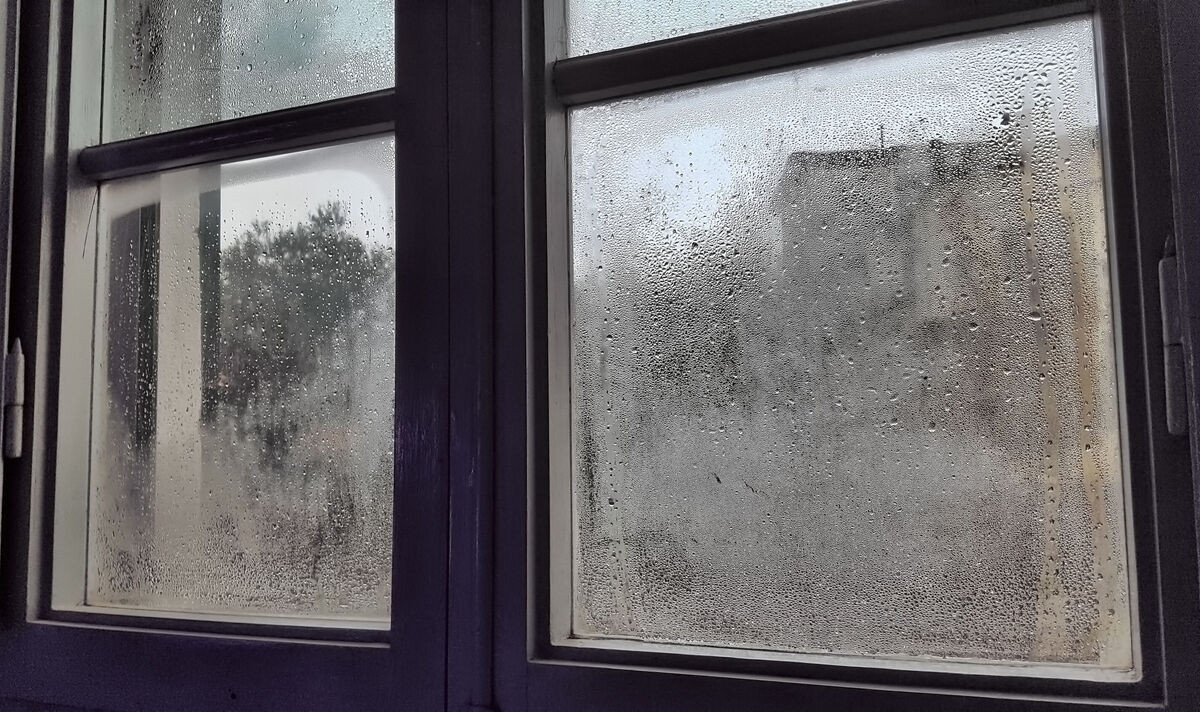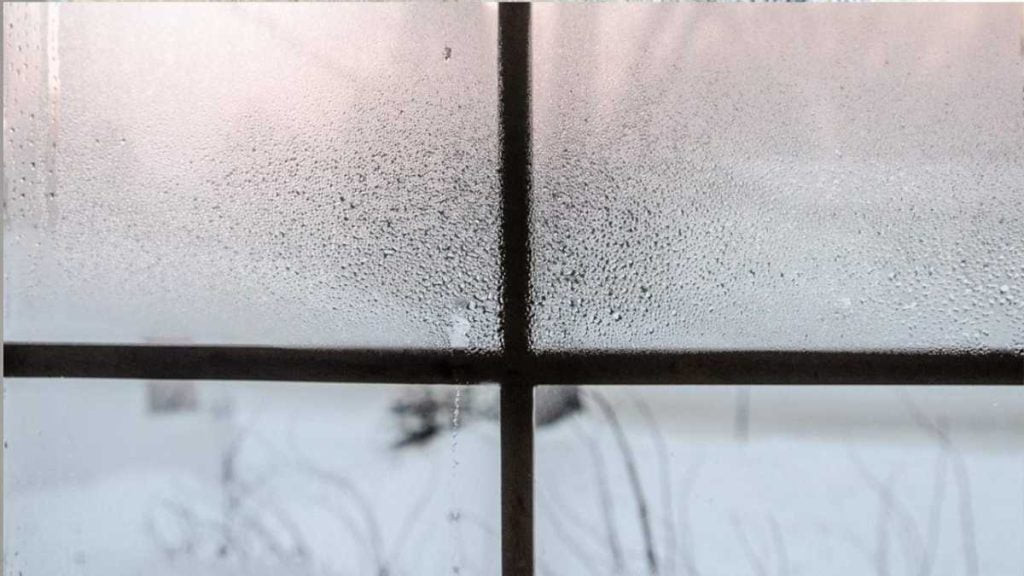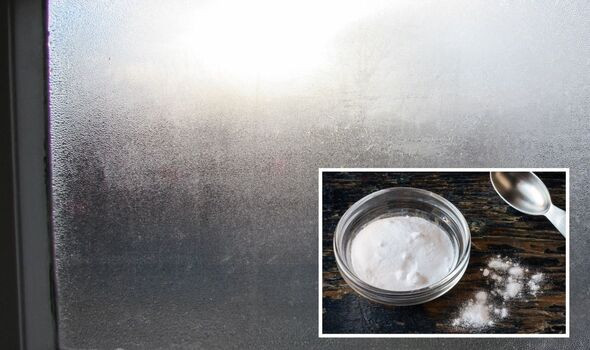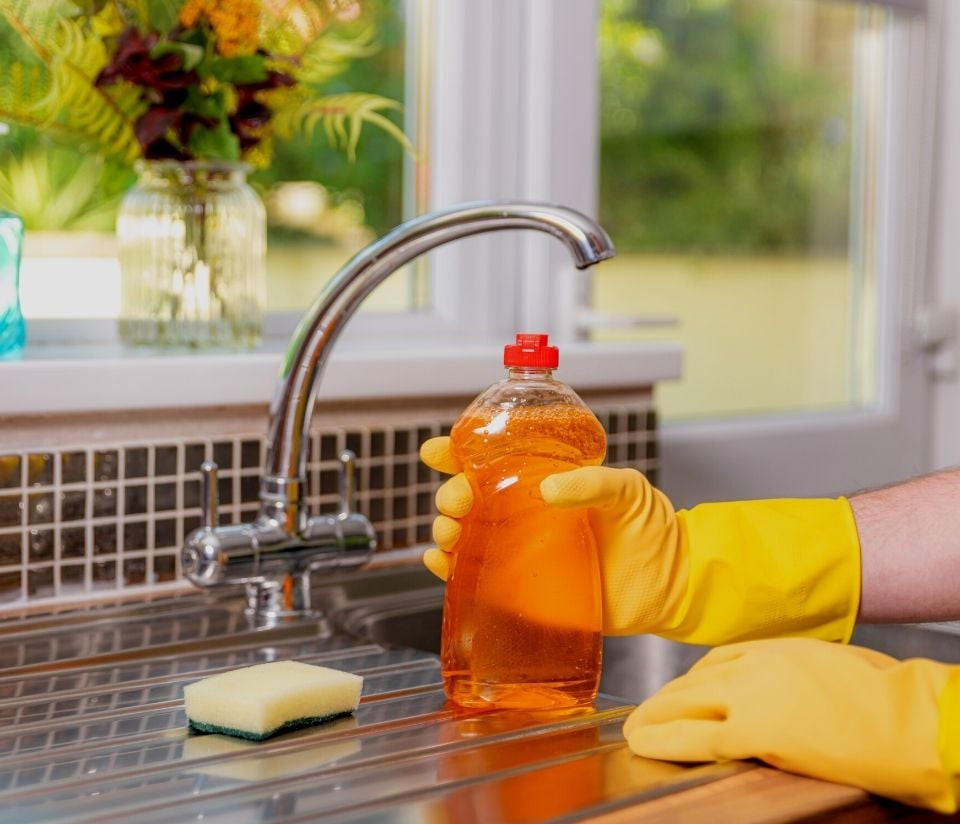Condensation is a common problem in British homes, causing mould, damp and illness. Here's a simple hack to help you keep your home warm and dry
Condensation is the dreaded foe for homeowners and renters alike. Creeping damp, draughty rooms and black mould is not only bad for inhabitants' health, it can also impact house value.
Nonetheless, condensation and water build up continues to be a problem in many British homes where dated building materials and poorly built extensions trap water within building skeletons. Research conducted by Rentokil found that roughly 5.8million British renters have experienced damp or condensation issues at some point in their tenancy. The study found 44% of British renters lived in properties with no extractor fan in the bathroom, and a shocking 31% didn't have a window in the bathroom.
It concluded that many renters have reported reaching out to their landlords for help with the damp, but in over half of those cases (51%), the tenant received no help. Thankfully, one trusty Reddit user has revealed a clever hack to get rid of condensation quickly and easily, to help avoid ugly mould and the potential health problems that come with it.
A Simple Hack to Beat Condensation
Typically, homeowners will try to remove condensation by opening a window, releasing the stuffy air from the house. However this can lead to freezing cold rooms. Luckily, there is a way around this problem according to one helpful Reddit user. Posting on the site, the handy helper said: "In Germany, we have a technique called 'Stosslüften'. "What that basically means is that instead of having maybe one window open all day (which is a huge waste of energy), open several windows all over the house for three minutes, creating a strong draft to exchange most of the warm humid air inside the house with cold air from outside. A cool feature about cold air is that it can 'hold' less water vapour. If this relatively dry cold air enters your house, it warms up. Being warmer, it is suddenly capable of taking up some of the extra humidity from inside your house. This might sound a little weird at first but is advocated in schools and so on. I use that technique and it works. Do this several times a day and you should really see a change."
Health Risks of Mould
The NHS report that mould in the house can lead to respiratory problems and allergies. It can also negatively impact the immune system. Some people are more impacted by mould in the home than others. These include:
- People with asthma
- Children
- Elderly people
- People with weakened immune systems
The NHS say that mould can create allergens, irritants, and sometimes even toxins. Inhaling or touching mould spores can often lead to reactions including a runny nose, sneezing, red eyes and skin itching. In some extreme cases it could lead to an asthma attack.
Tips to Prevent Condensation
AS the cold weather looks like it's here to stay, you might have already noticed condensation on your windows. Although it's a normal part of autumn and winter, if not dealt with the condensation can lead to mould, damp and damage window frames. Don't worry though, cleaning whizz Lynsey Crombie, who is also known as the Queen of Clean, has shared a simple trick to keep your home condensation free.
Lynsey explained that she comes from a long family line of cleaners, and this tip is on that's been passed down through the generations. All you need to try it for yourself is an absorbent cloth and some washing up liquid - two things most of us will already have at home.
Lynsey said: “Basically, what you need to do is wipe the water off every morning. A good thick microfiber cloth to just get it off. Open the window as well, and let the window actually dry and make a priority of every morning just going around the house with your microfiber cloth.” Simply add a small bit of washing up liquid onto your cloth before rubbing it over the windows. According to the pro, this helps create a barrier to stop condensation. If you're worried about the washing up liquid leaving streaks or marks, fear not. Lynsey explained that because you only use a tiny amount of washing up liquid it's unlikely to leave any marks at all. “This tip is very similar to shaving foam on the shower screen. You’re creating a barrier which is going to stop the water from sticking to it,” she added.
How to Deal with Condensation and Mould
Condensation and mould can cause serious health issues but there are ways of keeping them both at bay. Condensation occurs when warm air hits a cooler surface and creates moisture. Left alone, it can create mould and mildew which is both a pain to get rid of and can cause havoc with your health including worsening asthma, eczema and allergies. Luckily, there are a number of ways you can tackle both condensation and mould and save yourself issues further down the line.
Experts including Nicholas Donnithorne, UK technical services manager at damp proof company Peter Cox, Ben Gallizzi, energy expert at Uswitch and Natalie Hitchins, home products and services editor from Which?, previosuly shared some top tips for keeping condensation in check. The weather might be getting hotter, but you'll likely still be having a warm shower from time to time. To avoid steam clinging to your bathroom walls, make sure you open any windows and turn on any extractor fans, Nicholas said. Keep the bathroom door closed after you've showered as well, to stop any excess steam escaping into the rest of the house. And, Nicholas added: "Use the trickle vents on windows or keep a quarter light open for background ventilation." Trickle vents are small vents that can be added to the tops of windows and allow a constant stream of air in and out.
Dealing With Laundry
Hanging your pants and socks up inside can create condensation as the moisture from them escapes into the air. Instead, hang your clothes up outside, even if there's a slight chance of rain, Nicholas said. He added: "Alternatively, dry clothes using a tumble dryer or in a closed room with the window open."
Using Technology
If you've done everything you can to avoid excess moisture escaping into the air, try using tech to get rid of it. Ben, from Uswitch, said: "You may want to consider getting a dehumidifier if you regularly dry your clothes inside. They remove excess water from the air, helping to combat condensation and prevent mould growth." You don't have to spend a bomb on them either. You can buy moisture absorbing tabs too, and they cost as little as £6 from Screwfix. They work by absorbing any excess moisture, neutralising bad smells and can last for months.
Daily Habits That Increase Mould Growth
Plumbworld, a leading expert in bathroom and kitchen products, has shared the daily habits that increase the chance of mould growing in homes.
Leaving Wet Towels and Bathmats on Floor
Wet towels and bathmats on the floors after a shower or bath can increase humidity levels which provides a perfect breeding ground for mould spores. To prevent this, hang towels and bathmats in an area where they can dry quickly and to wash them regularly.
Not Turning on the Fan
An exhaust fan is critical in reducing moisture levels in the bathroom. When taking a hot shower or bath, steam increases the room's humidity level, creating an ideal setting for mould to flourish on walls, ceilings, and other surfaces. An exhaust fan helps by moving the moist air outside, significantly reducing the risk of mould growth. Experts suggest running the fan during the shower and for at least 20-30 minutes afterwards to lower humidity levels.
Ignoring Small Leaks
Even minor leaks from the sink, toilet, or shower can contribute to increased moisture levels in a bathroom, fostering an environment where mould can thrive. Over time, these leaks can cause significant water damage, promoting mould growth in less visible areas such as inside walls or under flooring. Fix leaks promptly to prevent mould and potential structural damage.
Keeping Shower Curtains or Doors Closed
Keeping the shower area closed after use traps moisture inside, delaying the drying process and creating a humid environment conducive to mould growth. Mould can easily develop on shower curtains, doors, and in tile grout if they remain wet for too long. To avoid this, leave the shower door or curtain open after use to improve air circulation and allow the area to dry more quickly.
Storing Too Many Products
Shower caddies and corners filled with bottles and accessories may seem harmless, but they can obstruct airflow and trap moisture and creates hidden, moist niches where mould can grow unnoticed. Keep shampoo and shower gel bottles to a minimum, and regularly clean and dry the areas underneath them to prevent mould growing.
Mould and Condensation: Final Thoughts
Taking steps to prevent condensation and mould growth can make a big difference in the health and well-being of your home and family. By following these simple tips and addressing any underlying issues, you can create a healthier and more comfortable living environment for yourself and your loved ones.



















